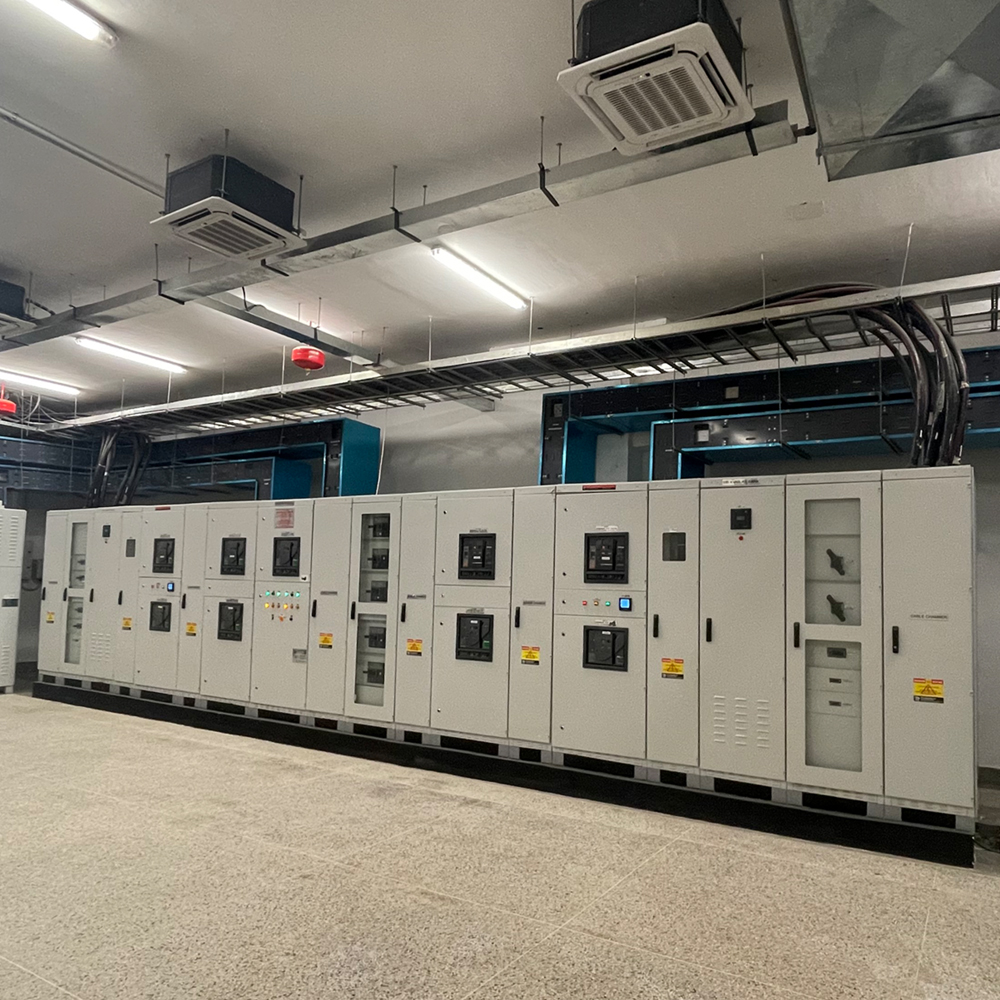A low-voltage power distribution system is a complex network of devices that provide safe and affordable electricity for domestic uses. A typical low-voltage power distribution system requires multiple devices to distribute, convert voltage, and protect circuits within the system. Electrical panels, including low-voltage main distribution panels, are critical in ensuring the reliability of electrical systems. To guarantee optimal function, switchboards must meet the precise specifications governing the electrical panel design and electrical panel manufacture of low-voltage switchboards.
Power distribution systems considered the last mile in the power generation process as delivering power to consumers in a convenient way. Low voltage distribution networks improve the flow of electricity from producers to consumers, while ensuring safe and efficient delivery to end consumers. The low voltage network, or secondary network, is the part of electricity distribution that transmit electricity from distribution transformers to end-user electricity meters.
Distribution or secondary transformers located along outlets convert the voltage from medium voltage levels to low voltage levels (mains voltage) suitable for direct use by the end consumer. Power supplies transfer energy from distribution substations to end users, forming a medium-voltage network or a primary network operating at medium voltage levels (typically 5–35 kV). In 240 V systems, multiple low-voltage outlets made of overhead power lines, overhead or underground cables, or a mixture thereof, serve consumers; in air networks, the service height difference is from the top of the rack to the roof connection. The voltage levels at which power distribution systems operate vary from region to region, but typically operate at electrical power levels below 100 kilovolts.
Reverse power flow in the network of the electrical system negatively affects the voltage profile of the low voltage distribution system for domestic networks. DG integration makes low voltage distribution networks complex in terms of voltage, frequency, and power quality. To analyse and coordinate the operation of distribution systems with a rapidly growing number of PV cells, more accurate distribution system models are required, especially for secondary (low voltage) circuits of the distribution system up to a common connection point for distributed PV cells. The low voltage systems also need to be upgraded to implement smart technologies at customer sites to ensure they work effectively with the existing low voltage distribution system.
Our certification of low voltage power distribution products is an easy way to ensure that your equipment complies with industry regulations, a key component to gaining market access. Having this knowledge will help every technician develop professional confidence and enthusiasm, thereby increasing their efficiency.
Components of a Low Voltage Distribution System
Distribution Transformer – A distribution transformer is a step-down transformer consisting of a delta-connected primary winding and a star-connected secondary winding. It forwards electrical power to the distributors.
Distributor – A distributor is a conductor from which taping is taken for supply to the consumers. The current is not constant throughout the distributor as it is tapped at various places along its length.
Service Mains – This is a short cable that connects the distributor to the consumer’s electricity meter.
Specifications
- Modular Construction expandable
- Indoor/Outdoor application Protection up to IP65
- Form 4b
- Various configuration
- Based on IEC 61439-1&2
- Arc proof option
- Ratings up to 6300Amps /100Ka
- Intelligent temperature monitoring system
- Easy accessibility of components for maintenance purpose.

